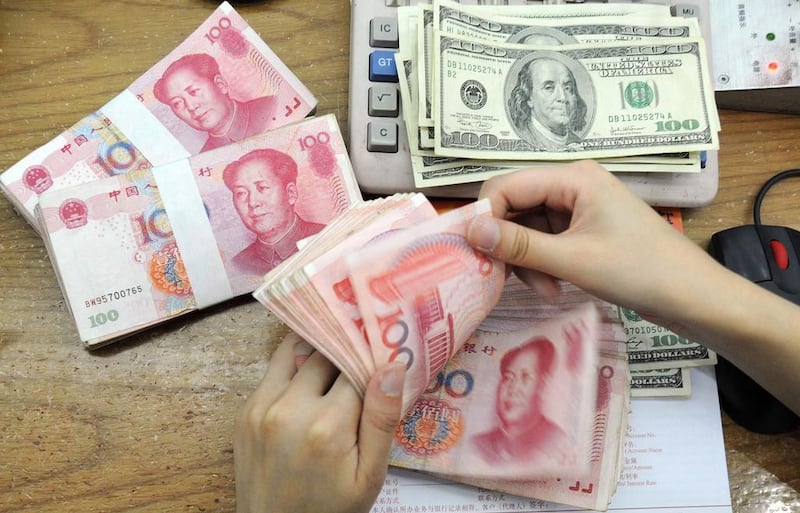A week that saw China devalue its currency by 4.4 per cent following a rout in Chinese equities could prove to be bad news for commodity-exporting countries, including the UAE.
That is because China, now the world’s top economy in terms of purchasing power parity, has been supporting world commodity prices after the global financial crisis, according to the IMF’s latest update on the country. Without China’s support, oil prices will fall further.
As China’s currency declines, the price Chinese companies pay for commodity imports rises. This reduces the amount of foreign commodities local firms are willing to purchase, which harms the exporters of oil and industrial metals.
Bank of America Merrill Lynch estimates that the yuan's 4.4 per cent devaluation this week will lead to oil prices falling another 2.2 per cent. That will further hurt Arabian Gulf states running sizeable budget deficits as the era of US$50 a barrel oil bites.
But that is just the short-term effect of China’s policy moves. China has been contributing to global oil demand by building significant stockpiles of crude in the run-up to its devaluation. Now that the yuan has fallen, further stockpiling looks much less attractive to China, which will have a further impact on the oil price.
In the longer term, poor Chinese growth prospects could put a long-lasting dent in demand for commodities. Analysts have long expressed doubt about the veracity of official Chinese statistics measuring growth.
Informal measures, from the output of key industrial materials, to demand for cars, suggest a much bleaker picture than official data portray.
China has been moving from to an investment-led high-growth model to a consumption-led “sustainable growth” model. Chinese growth is likely to slow as this happens, but experts disagree as to whether the impact will be gradual or sudden. The problem for China – and for commodities exporters who depend on Chinese demand – is that the financial sector’s vulnerabilities increase the likelihood that China could face what analysts have called a “hard landing”.
The sharp sell-off in Chinese equities, coupled with China’s oversized and poorly-regulated shadow banking sector – which has been used to fuel the country’s investment boom – increase the odds of a hard landing.
“[China’s] reliance on credit-financed investment as the prime engine of growth has created large vulnerabilities in the fiscal, real estate, financial, and corporate sectors”, said the IMF.
Overall credit growth remains faster than GDP growth, even after government measures to rein in shadow banking. Private credit-to-GDP stood at 150 per cent last year, close to the 173 per cent level in the United States before 2008.
Predicting financial crises is a fool’s game – but asset bubbles in equities and real estate, systemic over-investment in industrial capacity, oversupply in key primary and secondary industries, and a banking system that pumps out credit by compelling farmers to store their deposits in state banks are all reasons to worry that, for China, a hard landing is possible.
A Chinese economic slowdown has long been anticipated, but it comes at a bad time for Arabian Gulf states. Low oil prices are blowing holes in fiscal and current account balances across the region. Reduced Chinese growth will hit oil prices badly. The era of low oil prices may last longer than Arabian Gulf states would like.
abouyamourn@thenational.ae
Follow The National's Business section on Twitter





